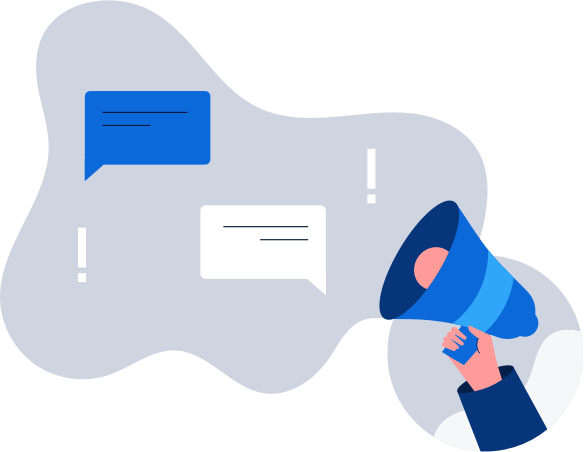How to get a Finnish IP address
The easiest way to improve your digital privacy is to switch your IP address using a VPN. We’ll …

In a typical day, we visit countless websites, on numerous devices. We open apps, we read emails, we shop, we browse, we communicate. Our lives today revolve around the internet. It’s how we, as a society, function. Without it, the world we know would grind to a halt.
With our incessant appetite for all the online world has to offer, the volume of data flowing across the web is almost unimaginable. Like a cascading waterfall, the trail we leave behind is vast, powerful, and—if not controlled—potentially dangerous.
Think of it as your digital fingerprint. When you open a door, scratch your arm, cough, or shed a hair, your personal DNA is deposited, leaving a trail about who you are and where you’ve been. Now, imagine those DNA-like traces hold important information beneath the surface, like your Social Security number, medical records, credit card details, and your home address.
This is what happens when you’re online.

People, however, aren’t aware of the extent to which it happens. It’s not something they actively think about. Like whether the WiFi network they’re connected to is secure, or if the app they’re using is tracking their location. Or whether the thousands of web trackers, hidden within layers of code on every webpage they visit, are tracking their online activities and selling that data to random entities.
“One of the areas that concerns me the most is the data sharing that’s going on behind the scenes,” says Arvind Narayanan, Assistant Professor of Computer Science at Princeton, referring to a process called “cookie syncing,” where multiple entities tracking you online share the information they’ve discovered, linking together the IDs to build a more fleshed out profile — all without your knowledge.
Furthermore, people don’t think about how identity theft is now the number one consumer crime in America, thanks to an influx of data breaches, malware, phishing emails, and fraudulent websites. Or how their password and email combo is almost certainly for sale on the dark web — for as little as a few bucks to the highest black-hatted bidder.
They don’t think about this because it’s not yet widely known.
This year, American companies are expected to spend nearly $19.2 billion on the acquisition of audience data—a figure that represents a 17.5 percent increase from 2018. That’s how valuable your data is to marketers. And advertisers are only a piece of the puzzle; there are innumerable nefarious ways your data could be exploited by cybercriminals, the cost of which to the global economy is an estimated $445 billion each year.
Practically everything you do in life is tracked. What mall you went to last weekend, how long you stayed in each shop, what you purchased, what health-related question you searched for online, that pregnancy test you ordered, the location of your surprise vacation with that special someone, whether you’re sick, your political beliefs, your sexual orientation, your financial status, even what school your child goes to and that pink dress you bought her for summer.
If you think we live in the land of the free, think again. You’re being watched, tracked, analyzed. You’re a product. A commodity.
For instance, that pregnancy test you bought: Maybe you swiped your loyalty card during the purchase. Instantly, this data is transferred to a broker who then sells it to advertisers. Maybe that’s why you got served those ads for anti-nausea tablets a few hours later?
Or when you walked into your local music store, spent a few minutes ambling around, and then found your feeds bombarded with ads for guitars. Perhaps an app was tracking your location, selling insight into your apparent desire for music products?

The data trail we leave behind is expansive. It can be used to spy, to steal, or to sell. Every click you make online. Everywhere you drive. Every store you visit. That information is all being traded behind your back. Your digital DNA forms a profile so in-depth, so detailed and personal, that it likely contains information even your closest friends don’t know.
It’s not just targeted ads we should be concerned about: “Many of these databases in which our information is collected started out with innocuous purposes, or purposes that consumers are comfortable with,” says Narayanan. “But when you combine it with the complete lack of transparency, accountability, and regulation there’s an enormous opportunity for misuse. What happens when the company goes bankrupt, the database gets hacked, or there’s a rogue employee?”
And what happens if the guy in the coffee shop intercepts your web traffic by connecting to the same unsecured public WiFi network, breaching your email, password, and whatever other data you inadvertently shared. Or when you accidentally click a spammy link in an email, falling victim to a phishing attack.
If our data gets into the wrong hands—which so often happens after a data breach or phishing attack—the risk of identity theft and other financially-devastating incidents skyrockets. This web of data—our digital DNA—is already out there, growing every second like a fungus. What’s worse, you yourself have no idea what your data ‘profile’ looks like.
It’s time people became aware of the seedy underworld profiting off their back. It’s time they had the knowledge, and the tools, to protect their privacy and secure their data. Because this $19 billion industry isn’t slowing down. With better awareness, people can now fight back.
